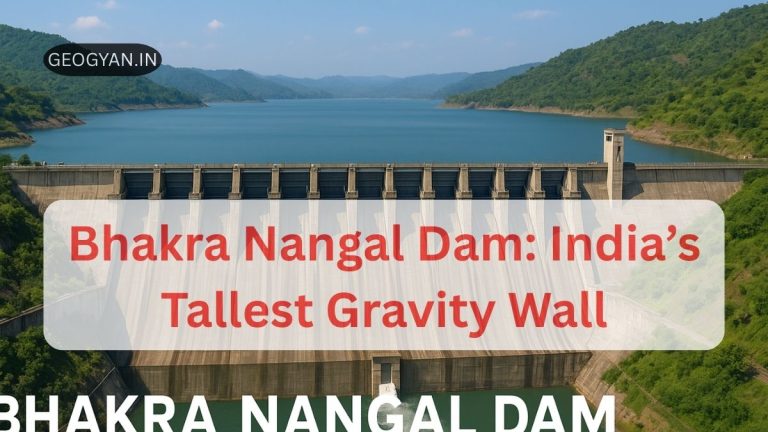Access the latest NCERT Solutions for Class 12 Geography Chapter-6: Planning and Sustainable Development , updated for 2024-2025. Solution is designed to help students tackle difficult questions with ease. The content is written in simple, easy-to-understand language.
Exercise
(i) Regional planning relates to:
a) Development of various sectors of economy.
b) Area specific approach of development.
c) Area differences in transportation network.
d) Development of rural areas.
Answer: b) Area specific approach of development.
(ii) ITDP refers to which one of the following?
a) Integrated Tourism Development Programme
b) Integrated Travel Development Programme
c) Integrated Tribal Development Programme
d) Integrated Transport Development Programme
Answer: c) Integrated Tribal Development Programme.
(iii) Which one of the following is the most crucial factor for sustainable development in the Indira Gandhi Canal Command Area?
a) Agricultural development
b) Ecodevelopment
c) Transport development
d) Colonization of land
Answer: b) Ecodevelopment.
Short Answer Questions (30 words)
(i) What are the social benefits of ITDP in the Bharmaur tribal region?
The social benefits of ITDP in the Bharmaur tribal region include an increase in literacy rates, improvement in the sex ratio, and a decline in child marriage, leading to overall social upliftment.
(ii) Define the concept of sustainable development.
Sustainable development refers to development that meets the needs of the present without compromising the ability of future generations to meet their own needs, ensuring ecological balance and resource conservation.
(iii) What are the positive impacts of irrigation on the Indira Gandhi Canal Command Area?
The positive impacts include increased soil moisture, higher crop productivity, and afforestation, which reduce wind erosion and improve environmental conditions in the region.
Long Answer Questions (150 words)
(i) Write short notes on the drought prone area programme. How does this programme help in the development of dryland agriculture in India?
The Drought Prone Area Programme (DPAP) was initiated in the Fourth Five Year Plan to provide employment and create productive assets in drought prone areas. It focuses on projects like irrigation, afforestation, and grassland development. DPAP aims to restore ecological balance in regions affected by erratic rainfall and soil degradation. The programme promotes dryland agriculture by encouraging the use of drought resistant crops, water conservation techniques, and soil management practices, thus improving agricultural productivity in arid regions and reducing dependency on rainfed agriculture.
(ii) Suggest the measures for the promotion of sustainability in the Indira Gandhi Canal Command Area.
Sustainability in the Indira Gandhi Canal Command Area can be promoted through:
1. Water management policies focusing on protective irrigation.
2. Encouraging the cultivation of less water intensive crops.
3. Lining of watercourses and implementation of the warabandi system to reduce water loss.
4. Reclamation of waterlogged and saline areas.
5. Afforestation and pasture development to restore the fragile ecosystem.
6. Providing financial support to economically weaker farmers.
7. Diversification of the economy by developing sectors beyond agriculture, such as agro-based industries.
Important Short answer Type Questions
Based on the analysis of Chapter 6: Planning and Sustainable Development in Indian Context from the NCERT Class 12 Geography book, here are important short answer type questions other than the exercise, asked in previous NCERT and UPSC exams:
1. What is the importance of NITI Aayog in India’s planning structure?
NITI Aayog was formed on January 1, 2015, replacing the Planning Commission. Its main objective is to involve states in economic policymaking and to provide strategic and technical advice to both Central and State governments. Unlike the centralized Planning Commission, NITI Aayog promotes decentralized, multilevel planning. It focuses on cooperative federalism and empowers states to have a say in economic policy formation. The aim is to balance development across the country, addressing regional disparities while driving sustainable growth.
2. Explain the Drought Prone Area Programme (DPAP).
The Drought Prone Area Programme (DPAP) was launched during the Fourth Five Year Plan to tackle challenges in drought affected regions. The main goal was to provide employment opportunities and create productive assets. Initially, DPAP focused on labour intensive civil works, but later shifted toward irrigation projects, land development, and afforestation. It also promotes watershed management and restoring ecological balance in drought prone areas. By improving agriculture and rural infrastructure, DPAP helps these regions reduce dependence on marginal lands and increase sustainable development.
3. What is the Hill Area Development Programme (HADP)?
The Hill Area Development Programme (HADP) was initiated during the Fifth Five Year Plan to promote the development of hilly districts like Uttarakhand, Darjeeling, and Nilgiris. The aim was to harness local resources through horticulture, agriculture, and forestry, considering the specific topographical, ecological, and social conditions of these areas. HADP focuses on improving infrastructure and promoting sustainable livelihoods in these regions. It addresses economic isolation and aims to integrate these regions with the national economy while preserving their fragile ecosystems.
4. What were the contributions of the Integrated Tribal Development Project (ITDP) in Bharmaur?
The Integrated Tribal Development Project (ITDP) in Bharmaur, Himachal Pradesh, aimed to improve the socioeconomic conditions of the Gaddi tribal community. Initiated during the Fifth Five Year Plan, ITDP improved infrastructure, including roads, schools, and healthcare facilities. Literacy rates, especially among women, increased significantly, and traditional agricultural practices were modernized. ITDP also reduced geographical isolation and enhanced opportunities for economic development in Bharmaur. The project emphasized the sustainable use of local resources, including agriculture and livestock rearing.
5. What are the main features of sustainable development?
Sustainable development refers to meeting the needs of the present without compromising the ability of future generations to meet their own needs. It integrates ecological, social, and economic considerations. The concept emphasizes using renewable resources, reducing environmental degradation, and promoting equity in access to resources. Introduced by the Brundtland Commission’s Report in 1987, sustainable development focuses on long term resource management and ensuring that development initiatives do not harm the environment while improving the quality of life for all.
6. Discuss the role of regional planning in reducing economic disparities.
Regional planning addresses uneven development across different areas in a country. It focuses on the unique resource bases, infrastructure needs, and development challenges of specific regions. By implementing targeted programs like the Command Area Development Programme and Drought Prone Area Development Programme, regional planning aims to reduce economic disparities. These programs promote balanced development, addressing issues in underdeveloped regions while optimizing the use of local resources. This leads to improved infrastructure, livelihoods, and regional equity.
7. What are the environmental concerns related to the Indira Gandhi Canal project?
The Indira Gandhi Canal has transformed agriculture in the Thar Desert but also caused significant environmental concerns. The most pressing issues are waterlogging and soil salinity due to overirrigation. The region’s fragile ecosystem has faced degradation, with intensive irrigation causing imbalances in soil moisture. Additionally, the introduction of water intensive crops in an arid region has led to unsustainable water usage. Ecological sustainability measures, such as water management and promoting less water intensive crops, are necessary to mitigate these concerns.
8. What are the key measures to promote sustainable development in the Indira Gandhi Canal region?
To ensure sustainable development in the Indira Gandhi Canal region, it is essential to implement effective water management policies, promote non water intensive crops, and focus on afforestation and pasture development. Additionally, the affected areas should adopt soil reclamation measures to combat waterlogging and soil salinity. Lining of watercourses and proper land management can reduce water loss, while promoting ecodevelopment strategies will ensure long term environmental stability. These efforts will help balance agricultural productivity with ecological conservation.
MCQs: Planning and Sustainable Development
Based on the analysis of Chapter 6: Planning and Sustainable Development in the Indian Context from the NCERT Class 12 Geography book, here are 20 MCQs that have been asked in previous years’ NCERT exams and UPSC:
MCQs: Planning and Sustainable Development
1. Which of the following organizations replaced the Planning Commission of India in 2015?
a) NITI Aayog
b) Planning Board
c) National Development Council
d) Rural Development Commission
2. What is the primary objective of NITI Aayog?
a) To formulate the FiveYear Plans
b) To provide strategic and technical advice
c) To implement government schemes
d) To manage disaster relief
3. Which of the following programmes aims to provide employment in drought prone areas?
a) National Rural Livelihoods Mission
b) Drought Prone Area Programme
c) Integrated Tribal Development Programme
d) Command Area Development Programme
4. What does ITDP stand for in the context of planning?
a) Integrated Tribal Development Programme
b) Integrated Transport Development Programme
c) Integrated Tourism Development Programme
d) Integrated Technology Development Programme
5. Which factor is crucial for sustainable development in the Indira Gandhi Canal Command Area?
a) Economic development
b) Agricultural productivity
c) Ecodevelopment
d) Land colonization
6. What type of planning focuses on economic disparities among regions?
a) Sectoral planning
b) Regional planning
c) Local planning
d) Urban planning
7. The term ‘sustainable development’ was popularized by which report?
a) Our Common Future
b) The Limits to Growth
c) The Human Development Report
d) The World Development Report
8. Which of the following is NOT a focus area of the Drought Prone Area Programme?
a) Irrigation projects
b) Urban development
c) Afforestation
d) Rural infrastructure
9. Which area is primarily covered under the Hill Area Development Programme?
a) Western Ghats
b) Himalayas
c) Eastern Ghats
d) Vindhya Range
10. What does the acronym CAD stand for in the context of irrigation?
a) Conservation Area Development
b) Command Area Development
c) Community Agricultural Development
d) Canal Aquifer Development
11. The Bharmaur region is predominantly inhabited by which tribal community?
a) Bhil
b) Gaddi
c) Santhal
d) Gond
12. What was the mean monthly temperature in Bharmaur during January?
a) 10°C
b) 4°C
c) 26°C
d) 15°C
13. What are the main rivers draining the Bharmaur region?
a) Yamuna and Ganga
b) Ravi and its tributaries
c) Brahmaputra
d) Godavari
14. Which of the following is a significant issue resulting from intensive irrigation in the Indira Gandhi Canal Command Area?
a) Desertification
b) Soil erosion
c) Waterlogging
d) Deforestation
15. The Gaddis of Bharmaur are known for which traditional practice?
a) Nomadic herding
b) Agriculture only
c) Fishing
d) Urban trade
16. Sustainable development considers which aspects of development?
a) Economic only
b) Social and environmental only
c) Ecological, social, and economic
d) Political only
17. Which of the following is an example of target area planning?
a) Integrated Rural Development Programme
b) Command Area Development Programme
c) Swachh Bharat Mission
d) Pradhan Mantri Gram Sadak Yojana
18. In which year was the Drought Prone Area Programme initiated?
a) 1965
b) 1971
c) 1974
d) 1980
19. Which region has the most significant concentration of backward tribal areas in India?
a) Western India
b) Southern India
c) North-Eastern India
d) Northern India
20. What does the Brundtland Report primarily address?
a) Economic growth
b) Sustainable development
c) Environmental conservation
d) Technological advancement
Answers:
1. a) NITI Aayog
2. b) To provide strategic and technical advice
3. b) Drought Prone Area Programme
4. a) Integrated Tribal Development Programme
5. c) Ecodevelopment
6. b) Regional planning
7. a) Our Common Future
8. b) Urban development
9. b) Himalayas
10. b) Command Area Development
11. b) Gaddi
12. b) 4°C
13. b) Ravi and its tributaries
14. c) Waterlogging
15. a) Nomadic herding
16. c) Ecological, social, and economic
17. b) Command Area Development Programme
18. c) 1974
19. c) North-Eastern India
20. b) Sustainable development
Other Chapter
| Chapter 1:- POPULATION: Distribution, Density, Growth and Composition | Chapter 2:- HUMAN SETTLEMENTS |
| Chapter 3:- LAND RESOURCES AND AGRICULTURE | Chapter 4:– WATER RESOURCES |
| Chapter 5:- MINERAL AND ENERGY RESOURCES | Chapter 7:- TRANSPORT AND COMMUNICATION |
| Chapter 8:- INTERNATIONAL TRADE | Chapter 9:- GEOGRAPHICAL PERSPECTIVE ON SELECTED ISSUES AND PROBLEMS |





























